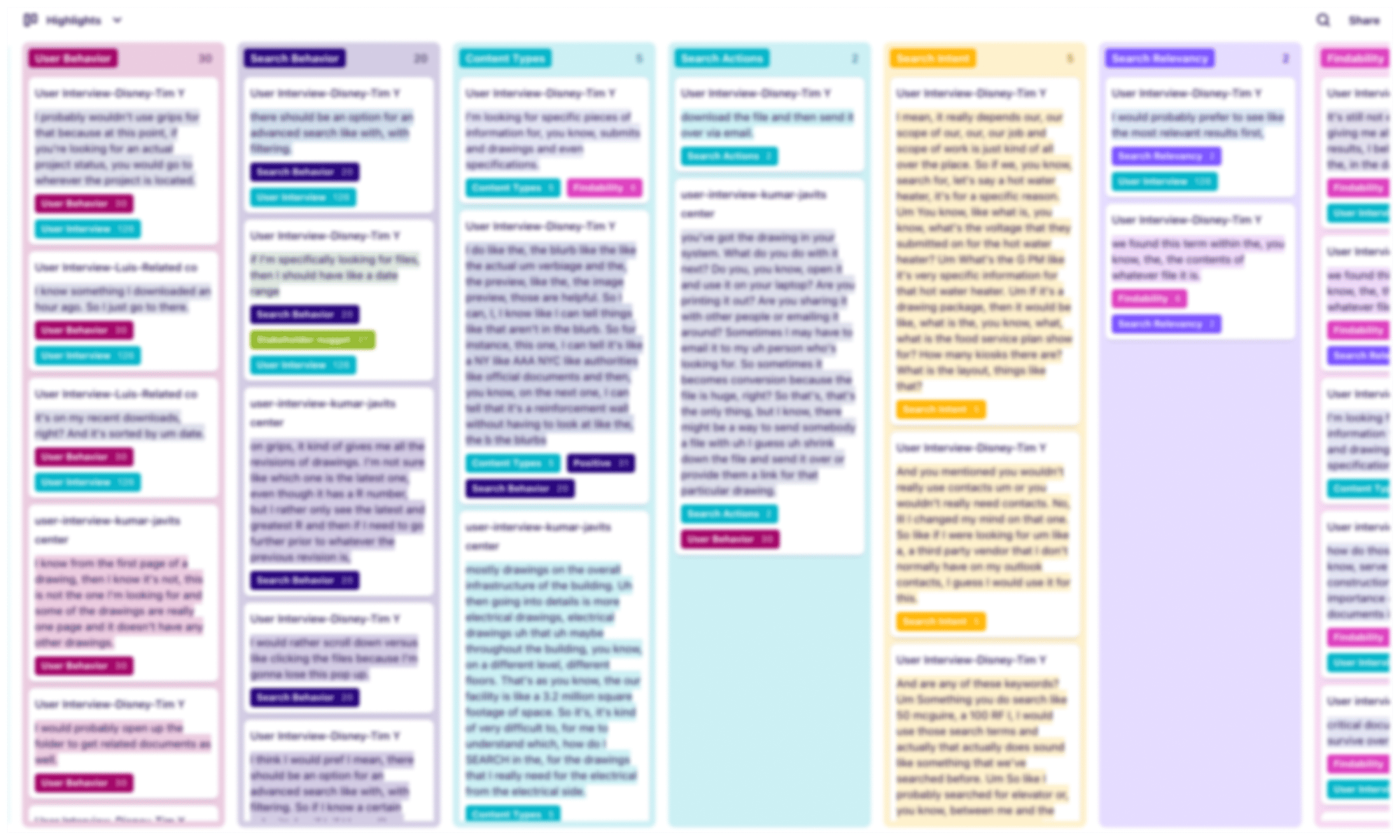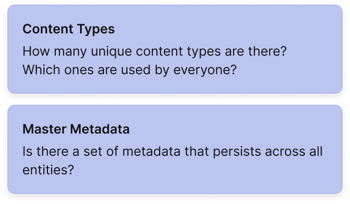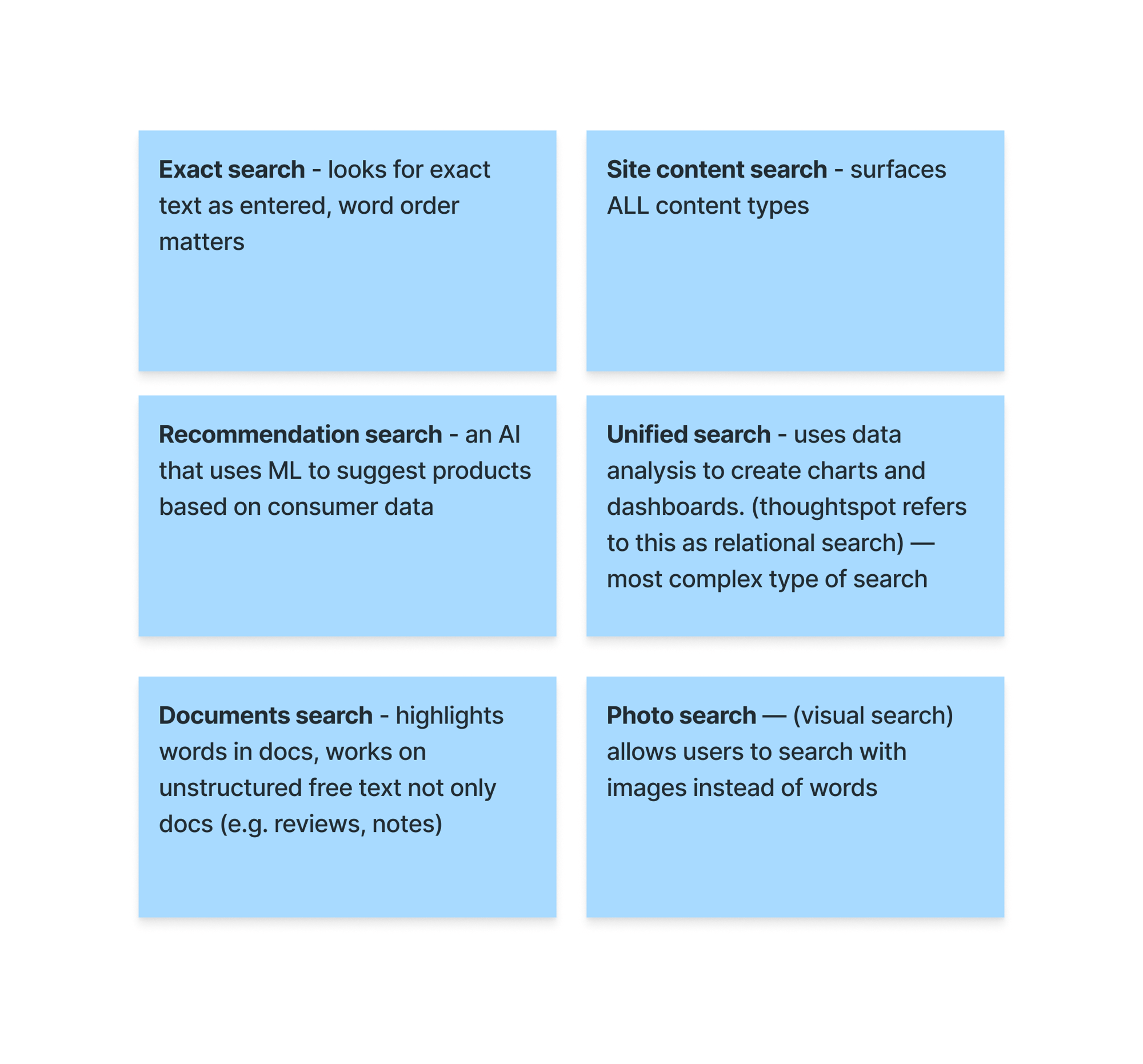AI, Semantic Search & Knowledge Panels
Create an action oriented search experience to help users answer a question or take immediate action on information.
Client
Working with the executives and engineers at this company, we conducted discovery research and redesigned the search experience for their document management platform. The new design integrates AI into search to improve document findability and uses semantic search, facets, metadata, and knowledge graph techniques to support faster insights across complex workflows for their Fortune 500 clients.
What We Did
Our work centered around surfacing actionable knowledge and insights with zero-clicks.
- Discovery
- Customer Research
- Ideation Workshops
- Metadata and Content Analysis
- Knowledge Panel Education
- UX/UI Design
- Added AI Insights to Search
Outcomes
We evaluated their data model and introduced advanced AI search concepts, including knowledge panels and graph-based navigation. Based on direct user research with Fortune 500 clients, we designed innovative search experiences that improved actionability, clarity, connectivity, and relevance. The final solutions reflect how to get the value from AI-enhanced search, marking a significant departure from the legacy design.
The Challenge
Our client's SaaS platform automatically organizes documents for projects. The platform ingests assets and data from various sources and leverages machine learning to categorize and label information so that it is connected semantically at scale.
Their AI worked great, but the search experience wasn't intuitive. Users reported the complex tabular search interface and filters as challenging to navigate. Inconsistent metadata compounded the issue, making it difficult for users to find the appropriate content.
Since this platform integrates data from various systems, each with distinct metadata categories, labels, and completeness levels, this resulted in a complex and cumbersome search experience.
As we set out to re-design the application, we aimed to:
- Reduce in-app mental workload
- Improve the intuitiveness and ease of use of search
- Bring the value of their knowledge graph forward
- Improve time-to-knolwedge
Our Approach
We followed our Search UX Framework to improve the platform.
Our framework involves:
- Analyzing content types, data, and metadata
- Assessing and refining taxonomies
- Identifying and designing search result types
- Defining actionable goals per search result type
- Redesigning facets
- Prototyping specific use cases
- User testing with primary personas
- Iterating designs based on user feedback
We believe in co-designing alongside key stakeholders and users to effectively create experiences that serve the needs of both audiences. Throughout our process, we sought feedback from and shared insights with our co-designers as we iterated. This approach allowed us to deliver rapid, vetted, effective solutions.
Developing Empathy
“(The platform) is not exactly giving all the search results I believe are in the data pool…I end up perusing through the documents manually to find what I need.”

Predictive UX deeply values evidence-based design so whenever possible, we prioritize capturing detailed feedback from users and internal stakeholders at every stage of the project. This approach ensures that we gather insights early and often, allowing us to make informed decisions that enhance the overall design and functionality of our solutions. By actively involving end-users and key team members in the feedback process, we aim to create products that truly meet their needs and expectations. Leading to more effective and user-centric outcomes.
Participant Interviews
Predictive UX conducted 5 remote moderated interviews with existing users. Their job titles ranged from VP of Operations to Project Manager to Facilities Manager. Some of the insights from participants were unique to their job title, while other insights overlapped.
Participants Desired:
- File organization and standardization of file names so that data could be recognized and interpreted without having to click into a file.
- Visible metadata within search so that search results are contextualized and discoverability is increased.
- A clean layout with visual hierarchy and well spaced design elements.
- Data status with confirmation and feedback loops around the project and its associated content.
Client Education
We began our work with a series of demos and workshops focused on education and knowledge sharing between our firm and the client's team. It was important to establish a shared understanding of the current state of their product while also examining concrete definitions of search, content types, metadata, and data structures.


Client
The US Chamber of Commerce T3 Innovation Network whose mission is to accelerate the use of digital tools to make the job market fairer and more inclusive.
What We Did
Led design and requirements refinement, collaborated with technical partners to align on decentralized storage, wallet integration, and credential rendering strategies.
Outcomes
A working POC with wallet-attached storage and a custom UI for linking verifiable credentials supported by a decentralized data model and resume rendering framework.
Delivery Time
12 weeks
Data Goals
Graph Traversal
Surfacing Metadata
Surfacing Metadata
Rich Visual Search Results
Not sure what’s right for your company?
Book a call to discuss your needs.